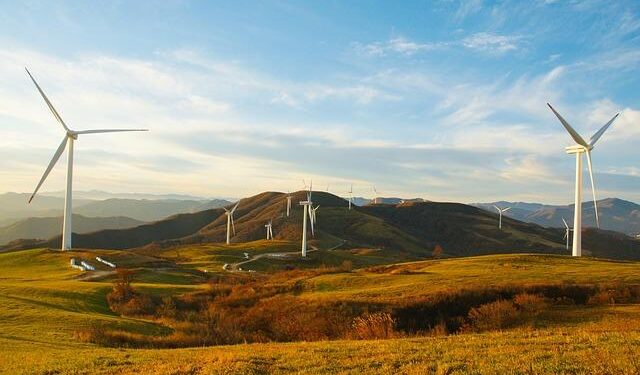The Ă…land Islands are charting a bold path toward a sustainable energy future, aiming to transform their energy system by 2030. A recent study published on ScienceDirect.com explores various scenarios that could guide the archipelago’s transition to renewable energy sources, increased efficiency, and reduced emissions. As climate concerns grow and energy demands evolve, these insights offer a timely glimpse into how the Ă…land Islands can become a model for clean, resilient energy systems in remote island communities.
Future-Proofing Energy Infrastructure in the Ă…land Islands
Integrating renewable resources forms the backbone of the Ă…land Islands’ strategy to secure energy resilience by 2030. Local authorities are emphasizing decentralized generation methods, particularly solar and wind power, complemented by upgraded grid infrastructure designed to handle variable outputs efficiently. Smart grid technologies are being piloted to optimize energy distribution and consumption, allowing for real-time adjustments that minimize waste and enhance reliability. Enhanced energy storage solutions, including both battery systems and hydrogen storage, are central to overcoming the intermittency challenges associated with renewables, ensuring a steady supply even during low-production periods.
Community engagement remains a pivotal element in the sustainable shift, with initiatives promoting collective energy ownership and demand-side management. The following table outlines key future-proofing measures alongside their expected impact on Ă…land’s energy system:
| Measure | Impact | Timeline |
|---|---|---|
| Microgrid Implementation | Improved local reliability and independence | 2025-2027 |
| Hydrogen Storage Integration | Long-term energy storage capacity | 2028-2030 |
| Smart Meter Deployment | Enhanced demand response and user engagement | 2024-2026 |
Together, these interventions are designed to build a resilient energy framework that supports the islands’ ecological goals while ensuring economic viability. Stakeholders across public and private sectors continue to collaborate closely, accelerating innovations that promise a low-carbon future.
Innovative Renewable Solutions Driving the 2030 Vision
The Ă…land Islands are charting an ambitious transition towards a carbon-neutral future by 2030, leveraging a mix of cutting-edge renewable energy technologies. Central to this transformation is the integration of smart grid systems, which allow for real-time energy optimization and increased efficiency. Wind power, supported by offshore turbine installations strategically placed in the archipelago’s windswept waters, is expected to deliver a significant share of electricity demand. Meanwhile, solar microgrids on individual islands enhance local resilience against power outages, combining renewable generation with advanced storage solutions. Energy autonomy is further boosted through electrification of transport networks using renewable energy, paving the way for sustainable mobility options like electric ferries and vehicles.
Key innovations underpinning these developments include:
- Hybrid energy systems combining wind, solar, and bioenergy to ensure continuous supply
- Advanced battery storage employing next-generation lithium-ion and flow technologies
- Demand-side management platforms enabling consumers to actively balance consumption with production
The following table outlines a potential energy mix forecast for 2030, highlighting projected contributions from major renewable sources:
| Energy Source | Projected Contribution (%) | Key Technology |
|---|---|---|
| Wind Power | 55 | Offshore Turbines |
| Solar Energy | 25 | Distributed Microgrids |
| Bioenergy | 15 | District Heating & CHP |
| Energy Storage | 5 | Grid-Scale Batteries |
Key Policy Recommendations for Achieving Sustainability Goals
Achieving sustainability in the Ă…land Islands by 2030 demands targeted policy measures that emphasize decentralization of energy production and the integration of renewable sources. Central to this strategy is the expansion of local solar and wind energy initiatives, coupled with incentives to promote energy efficiency in residential and commercial sectors. Policymakers should also prioritize the development of smart grid technologies that enable real-time energy management, thereby reducing wastage and ensuring a stable energy supply across the islands.
Furthermore, fostering community engagement through education and subsidies can accelerate the transition to greener practices. Specific recommendations include:
- Implementing tax breaks for households and businesses adopting electric vehicles and renewable heating solutions
- Introducing stringent building codes mandating energy-efficient construction and retrofitting
- Establishing public-private partnerships to finance innovative clean energy projects
- Enhancing regional collaboration to optimize energy distribution and storage capabilities
| Policy Measure | Expected Impact | Target Year |
|---|---|---|
| Renewable Energy Subsidies | Increase in local clean energy by 35% | 2028 |
| Smart Grid Rollout | Reduction in energy loss by 20% | 2030 |
| EV Incentive Program | 40% increase in EV adoption | 2029 |
Key Takeaways
As the Ă…land Islands navigate the path toward 2030, the scenarios outlined in the ScienceDirect study offer a compelling roadmap for a sustainable energy future. With renewable resources at the forefront and innovative technologies shaping the energy landscape, Ă…land stands poised to become a model for regional sustainability. The challenges are significant, but so too are the opportunities-for energy independence, environmental stewardship, and economic resilience. As policymakers and communities collaborate, the vision of a clean, sustainable Ă…land energy system moves closer to reality, illuminating a hopeful example for island regions worldwide.
















